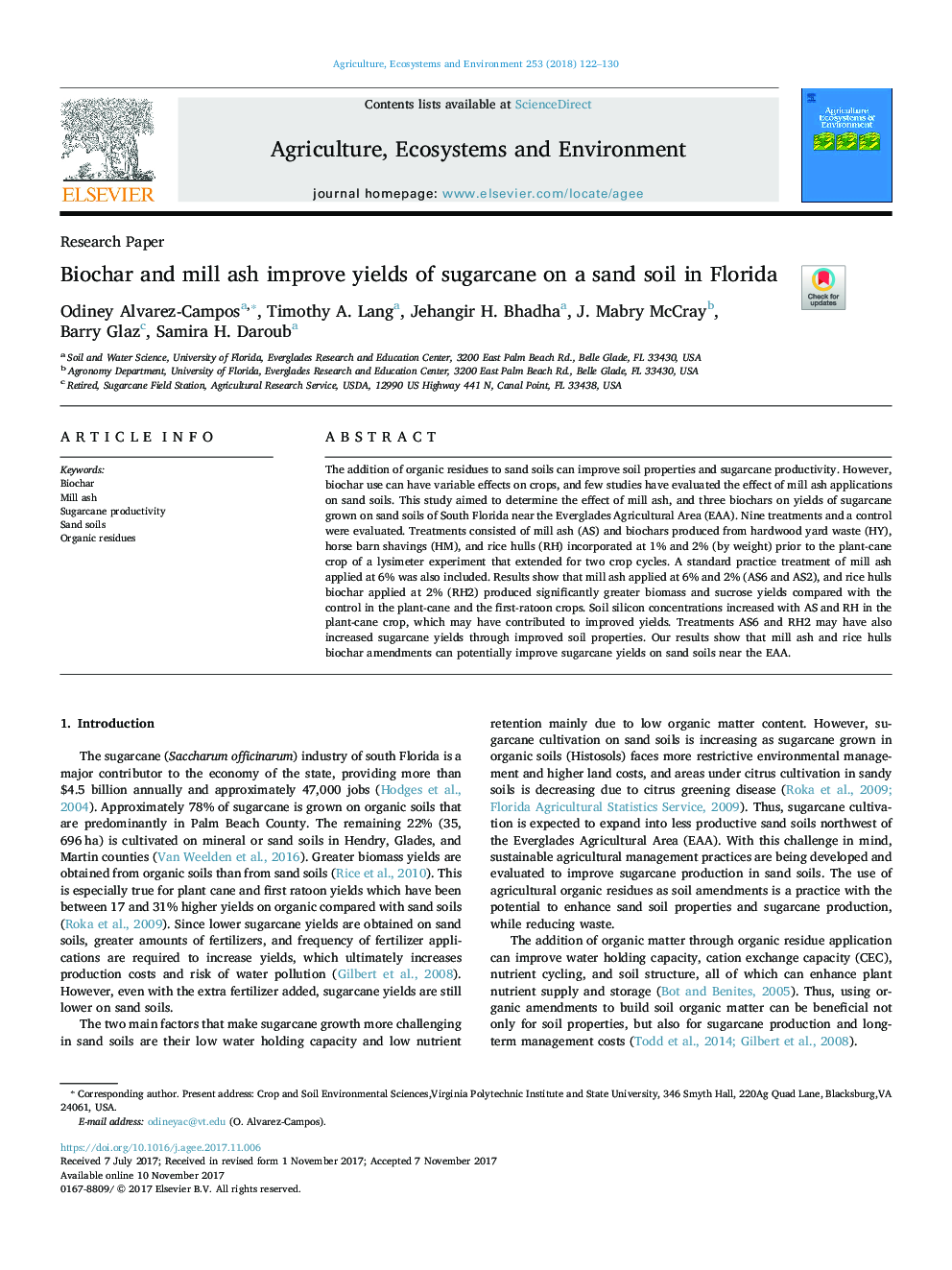| Article ID | Journal | Published Year | Pages | File Type |
|---|---|---|---|---|
| 8487238 | Agriculture, Ecosystems & Environment | 2018 | 9 Pages |
Abstract
The addition of organic residues to sand soils can improve soil properties and sugarcane productivity. However, biochar use can have variable effects on crops, and few studies have evaluated the effect of mill ash applications on sand soils. This study aimed to determine the effect of mill ash, and three biochars on yields of sugarcane grown on sand soils of South Florida near the Everglades Agricultural Area (EAA). Nine treatments and a control were evaluated. Treatments consisted of mill ash (AS) and biochars produced from hardwood yard waste (HY), horse barn shavings (HM), and rice hulls (RH) incorporated at 1% and 2% (by weight) prior to the plant-cane crop of a lysimeter experiment that extended for two crop cycles. A standard practice treatment of mill ash applied at 6% was also included. Results show that mill ash applied at 6% and 2% (AS6 and AS2), and rice hulls biochar applied at 2% (RH2) produced significantly greater biomass and sucrose yields compared with the control in the plant-cane and the first-ratoon crops. Soil silicon concentrations increased with AS and RH in the plant-cane crop, which may have contributed to improved yields. Treatments AS6 and RH2 may have also increased sugarcane yields through improved soil properties. Our results show that mill ash and rice hulls biochar amendments can potentially improve sugarcane yields on sand soils near the EAA.
Keywords
Related Topics
Life Sciences
Agricultural and Biological Sciences
Agronomy and Crop Science
Authors
Odiney Alvarez-Campos, Timothy A. Lang, Jehangir H. Bhadha, J. Mabry McCray, Barry Glaz, Samira H. Daroub,
